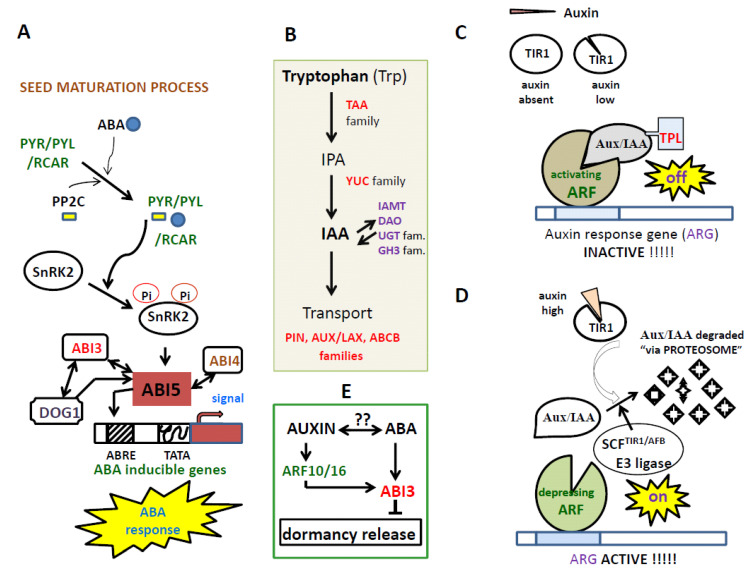Figure 1.
(A) In the presence of ABA, the ABA receptors PYR/PYL/RCAR form a complex with PP2C, and this inhibits the phosphatase activity of PP2C and thereby activate SnRK2. The activated SnRK2 subsequently turns on ABRE-binding protein/ABRE-binding factor (AREB/ABF) transcription factors (TFs), which in turn activates the transcription of ABA-responsive genes. Among AREB/ABF TFs, ABA insensitive 5 (ABI5), a member of the basic leucine zipper transcription factor family, plays a central role in regulating ABA-responsive genes in seeds. ABI4 and ABI3, AP2-type and B3-type TFs, respectively, have been reported to function together ABI5 to induce the expression of ABA-responsive genes, and thereby regulate seed dormancy and germination. (B) Auxin synthesis and transport involving TAA and YUC enzymes, and PIN, AUX/LAX and ABCB proteins. (C) When auxin levels are low, AUX/IAAs prevent ARF regulatory action on auxin-responsive genes. (D) If the cellular auxin level is high, auxin promotes interaction between TIR1/AFB and Aux/IAA proteins, resulting in degradation of the Aux/IAAs and the release of ARF repression. (E) Hypothesis of interaction between auxin-ABA to inhibit the primary seed dormancy release with ABI3 as a trigger.

